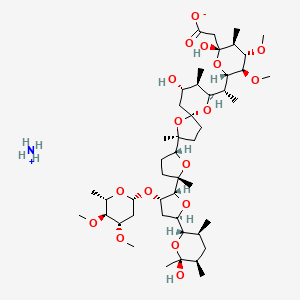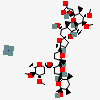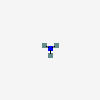Maduramycin
- Maduramicin
- Cygro
- Maduramicin ammonium
- Maduramycin
- CL-259971
- Create:2006-07-28
- Modify:2025-01-11
 Maduramicin Ammonium (annotation moved to).
Maduramicin Ammonium (annotation moved to).
- maduramicin
- maduramycin
- Maduramicin
- Cygro
- Maduramicin ammonium
- Maduramycin
- CL-259971
- UNII-5U912U22T2
- 84878-61-5
- CL-273703
- azanium;2-[(2R,3S,4S,5R,6S)-6-[(1R)-1-[(2S,5R,7S,8R,9S)-2-[(2R,5S)-5-[(2R,3S,5R)-3-[(2R,4S,5S,6S)-4,5-dimethoxy-6-methyloxan-2-yl]oxy-5-[(2S,3S,5R,6S)-6-hydroxy-3,5,6-trimethyloxan-2-yl]oxolan-2-yl]-5-methyloxolan-2-yl]-7-hydroxy-2,8-dimethyl-1,10-dioxaspiro[4.5]decan-9-yl]ethyl]-2-hydroxy-4,5-dimethoxy-3-methyloxan-2-yl]acetate
- Maduramicin Ammonium Salt
- 5U912U22T2
- CL 273,703
- MADURAMICIN [MI]
- 79356-08-4
- MADURAMICIN [INN]
- MADURAMICIN [USAN]
- MADURAMICIN [MART.]
- MADURAMICIN [GREEN BOOK]
- CCG-270582
- D81959
- Maduramicin ammonium, VETRANAL(TM), analytical standard
- LONOMYCIN A, 23,27-DIDEMETHOXY-2,6,22-TRIDEMETHYL-11-O-DEMETHYL-22-((2,6-DIDEOXY-3,4-DI-O-METHYL-.BETA.-L-ARABINO-HEXOPYRANOSYL)OXY)-6-METHOXY-, MONOAMMONIUM SALT, (3R,4S,5S,6R,7S,22S)-
 Maduramicin Ammonium (annotation moved to)
Maduramicin Ammonium (annotation moved to)
H300 (100%): Fatal if swallowed [Danger Acute toxicity, oral]
H310 (100%): Fatal in contact with skin [Danger Acute toxicity, dermal]
H319 (100%): Causes serious eye irritation [Warning Serious eye damage/eye irritation]
P262, P264, P264+P265, P270, P280, P301+P316, P302+P352, P305+P351+P338, P316, P321, P330, P337+P317, P361+P364, P405, and P501
(The corresponding statement to each P-code can be found at the GHS Classification page.)
Aggregated GHS information provided per 38 reports by companies from 1 notifications to the ECHA C&L Inventory. Each notification may be associated with multiple companies.
Information may vary between notifications depending on impurities, additives, and other factors. The percentage value in parenthesis indicates the notified classification ratio from companies that provide hazard codes. Only hazard codes with percentage values above 10% are shown.
Acute Tox. 2 (100%)
Acute Tox. 2 (100%)
Eye Irrit. 2 (100%)
- CAS Common ChemistryLICENSEThe data from CAS Common Chemistry is provided under a CC-BY-NC 4.0 license, unless otherwise stated.https://creativecommons.org/licenses/by-nc/4.0/
- DrugBankLICENSECreative Common's Attribution-NonCommercial 4.0 International License (http://creativecommons.org/licenses/by-nc/4.0/legalcode)https://www.drugbank.ca/legal/terms_of_useMaduramicinhttps://www.drugbank.ca/drugs/DB11525
- EPA DSSToxMaduramicin ammoniumhttps://comptox.epa.gov/dashboard/DTXSID4048983CompTox Chemicals Dashboard Chemical Listshttps://comptox.epa.gov/dashboard/chemical-lists/
- European Chemicals Agency (ECHA)LICENSEUse of the information, documents and data from the ECHA website is subject to the terms and conditions of this Legal Notice, and subject to other binding limitations provided for under applicable law, the information, documents and data made available on the ECHA website may be reproduced, distributed and/or used, totally or in part, for non-commercial purposes provided that ECHA is acknowledged as the source: "Source: European Chemicals Agency, http://echa.europa.eu/". Such acknowledgement must be included in each copy of the material. ECHA permits and encourages organisations and individuals to create links to the ECHA website under the following cumulative conditions: Links can only be made to webpages that provide a link to the Legal Notice page.https://echa.europa.eu/web/guest/legal-noticeMaduramicin (EC: 635-502-4)https://echa.europa.eu/information-on-chemicals/cl-inventory-database/-/discli/details/168206
- FDA Global Substance Registration System (GSRS)LICENSEUnless otherwise noted, the contents of the FDA website (www.fda.gov), both text and graphics, are not copyrighted. They are in the public domain and may be republished, reprinted and otherwise used freely by anyone without the need to obtain permission from FDA. Credit to the U.S. Food and Drug Administration as the source is appreciated but not required.https://www.fda.gov/about-fda/about-website/website-policies#linking
- New Zealand Environmental Protection Authority (EPA)LICENSEThis work is licensed under the Creative Commons Attribution-ShareAlike 4.0 International licence.https://www.epa.govt.nz/about-this-site/general-copyright-statement/
- Comparative Toxicogenomics Database (CTD)LICENSEIt is to be used only for research and educational purposes. Any reproduction or use for commercial purpose is prohibited without the prior express written permission of NC State University.http://ctdbase.org/about/legal.jsp
- KEGGLICENSEAcademic users may freely use the KEGG website. Non-academic use of KEGG generally requires a commercial licensehttps://www.kegg.jp/kegg/legal.html
- Metabolomics Workbench
- NCI Thesaurus (NCIt)LICENSEUnless otherwise indicated, all text within NCI products is free of copyright and may be reused without our permission. Credit the National Cancer Institute as the source.https://www.cancer.gov/policies/copyright-reuseNCI Thesaurushttps://ncit.nci.nih.gov
- Wikidatamaduramicinhttps://www.wikidata.org/wiki/Q23936401
- WikipediaMaduramicinhttps://en.wikipedia.org/wiki/Maduramicin
- PubChem
- Medical Subject Headings (MeSH)LICENSEWorks produced by the U.S. government are not subject to copyright protection in the United States. Any such works found on National Library of Medicine (NLM) Web sites may be freely used or reproduced without permission in the U.S.https://www.nlm.nih.gov/copyright.htmlmaduramicinhttps://www.ncbi.nlm.nih.gov/mesh/67018091Anti-Bacterial Agentshttps://www.ncbi.nlm.nih.gov/mesh/68000900
- GHS Classification (UNECE)GHS Classification Treehttp://www.unece.org/trans/danger/publi/ghs/ghs_welcome_e.html

 CID 196129 (Maduramicin)
CID 196129 (Maduramicin) CID 222 (Ammonia)
CID 222 (Ammonia)